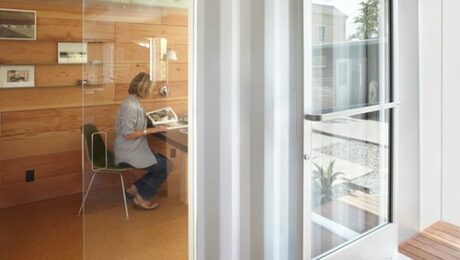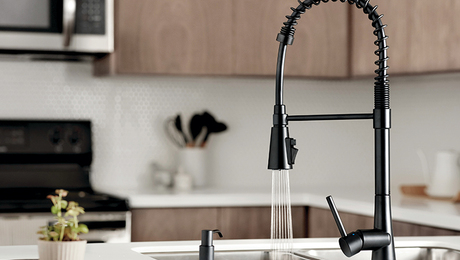Code-Minimum Insulation for Exterior Wall
I live in climate zone 6 (Ottawa, Ontario) and our provincial code only calls for R5 exterior insulation on a 2×6 wall.
Conforming with code and using the minimum R5 exterior insulation (R20-ish in stud cavity), is it safer to keep the sheathing on the exterior (cold) with a ventilated rain screen and appropriate WRB, or install the sheathing on the interior side of the rigid insulation. Which is safer using minimum code as a benchmark?
Thank you,
Chris
GBA Detail Library
A collection of one thousand construction details organized by climate and house part









Replies
You may find this article interesting.
https://www.greenbuildingadvisor.com/article/how-to-design-a-wall
Yes some codes do seem to encourage walls most of us think are risky. Remember code is the worst house you can legally build so you may want to install more insulation than your code requires.
Walta
Walter,
While it is logically correct to say that a code minimum house will always be the the worst one you can build, that truism neglects the improvements modern code revisions have made in the last few years. Perhaps a better question to ask is whether the houses that result from following the code in a certain jurisdiction results in a well build and well performing one? That's certainly true here in BC - and I suspect in Ontario. Any deficiencies these houses have are the result of poor workmanship, not from following the code.
Thank you Walter. I will check out that link!
Chris,
With a good interior side vapour-barrier, the R-5 exterior insulation required by the Ontario code has been shown to be safe, as it does afford enough drying to the exterior to keep the wall dry. Jumping up from there is where things get dicey. If you go beyond the R-5, you really need to go all the way and add enough insulation to bring the interior surface above the dew point.
The difference in complexity in moving the foam to the interior of your sheathing is substantial. People who want to do this typically go with a nailbase product like Zip-R.
Thank you Malcolm. When you say “a good vapour barrier” are we talking typical 6 mil poly? What are the implications of using a smart vapour (I.e MemBrain, Siga Majrex, etc) with the sheathing installed on the cold side (to remove some of the suspense, the sheathing is an R5 EPS, adhered to 7/16 OSB by Styrorail and the EPS is facing the interior)?
Any of the smart vapour retarders will work as well as, or better than poly. Their primary benefit is allowing drying to the interior in warm weather. R5 EPS is not much of a vapour retarder itself, so putting the sheathing on the outside of this will put the sheathing at somewhat of risk for condensation in colder weather. This is a common challenge to products like your and ZIP-R, though I have not seen any good studies yet showing any pattern of failure with these products. IMVHO, if the wall is well detailed, airtight and has a VR on the interior, putting the sheathing on the outside of the rigid is not much of a problem in most climates. As Bob mentions, it can affect the structural rigidity and that can be a concern in high wind and seismic zones.
Chris,
We know poly works in these assemblies in Ontario. The potential danger will come if the air conditioning season extends long enough that the presence of a wrong side vapour-barrier allows moisture to accumulate on the poly. So far there is no evidence of that occurring in Ontario, but perhaps a smart membrane makes sense?
Also, having the insulation in between the studs and sheathing may have structural implications. Check with your local building department before you make a decision.
This assembly was approved, but I do understand the concern. Thank you.
Since it has been built for a while here now, there is nothing wrong with your 2x6+R5 with interior poly wall. It works.
You can make it better with a couple of small changes.
Make sure to tape your sheathing (not the foam) and detail your sheathing as your main air barrier. It is also well worth testing the air barrier before interior insulation goes. A well sealed wall won't leak warm moist air into your wall cavity which is the biggest source of moisture.
Select a permeable rigid foam. Unfaced EPS/GPS/XPS or permeable polyiso are great options and in most cases the same cost.
Variable perm membrane costs are silly up here in the great white north, your money is better spent elsewhere. Standard 6mil poly is good enough for walls.
Make sure your all your rough openings are flashed properly. Typical house wrap install can be very sloppy for no real reason, clean install takes the same time as a sloppy one. You want a nice neat install with a quality flex tape around your windows sills.